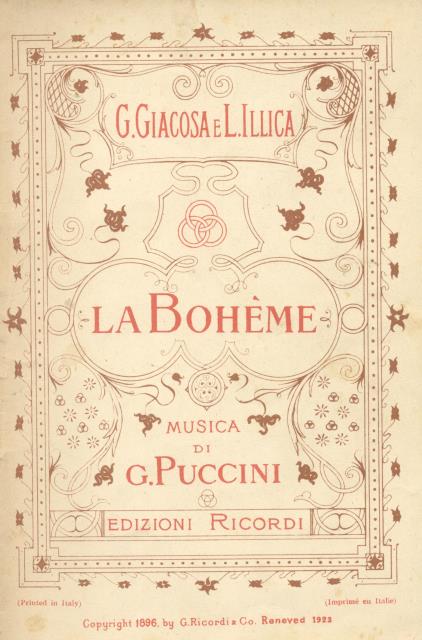
In spite of shifting the storyline, the production remains faithful to the libretto in conveying the timeless psychological reactions to love and death. In its visual layer, the production refers to 1930s French film classics, feeding off of the mysterious atmosphere created on the silver screen by Marcel Carné and René Clair. Rodolfo watches meditatively out of the window. To the left, is a fireplace, table, bed, cabinet, a small bookcase, four chairs, a painters easel: scattered books, many bundles of paper, and two candlesticks. A wide window overlooks the roofs covered in snow. The stage design was directly inspired by the famous artists’ residence of La Ruche-a building in the Montparnasse district, home to the greatest 20th-century painters from the Parisian School. Puccini's La Boheme libretto, complete opera translation in English - act 1 In a garret. This was a time when modern art flourished, and Paris became a mecca for painters looking to satisfy their artistic cravings and create art without any academic restraints. In the Podlasie Opera and Philharmonic production, the plot of “La Bohème” is shifted to the 1930s.

The opera’s libretto, based on Henri Murger’s “Scènes de la vie de bohème,” accurately conveys the political background of post-revolutionary France and the discontent felt by the poorest social circles, with young artists living on the brink of poverty. The main storyline-the love between the poor seamstress Mimì, who suffers from tuberculosis, and the poet Rodolfo-takes place in Paris in the first half of the 19th century. The touching Mimì and the romantic Rodolfo plus the unpredictable Musetta and the hot-headed Marcello are two couples whose fate represents the two narrative axes of the composition. The plot of “La Bohème” is structured around four images-four stand-alone scenes with a distinct focal point.


 0 kommentar(er)
0 kommentar(er)
